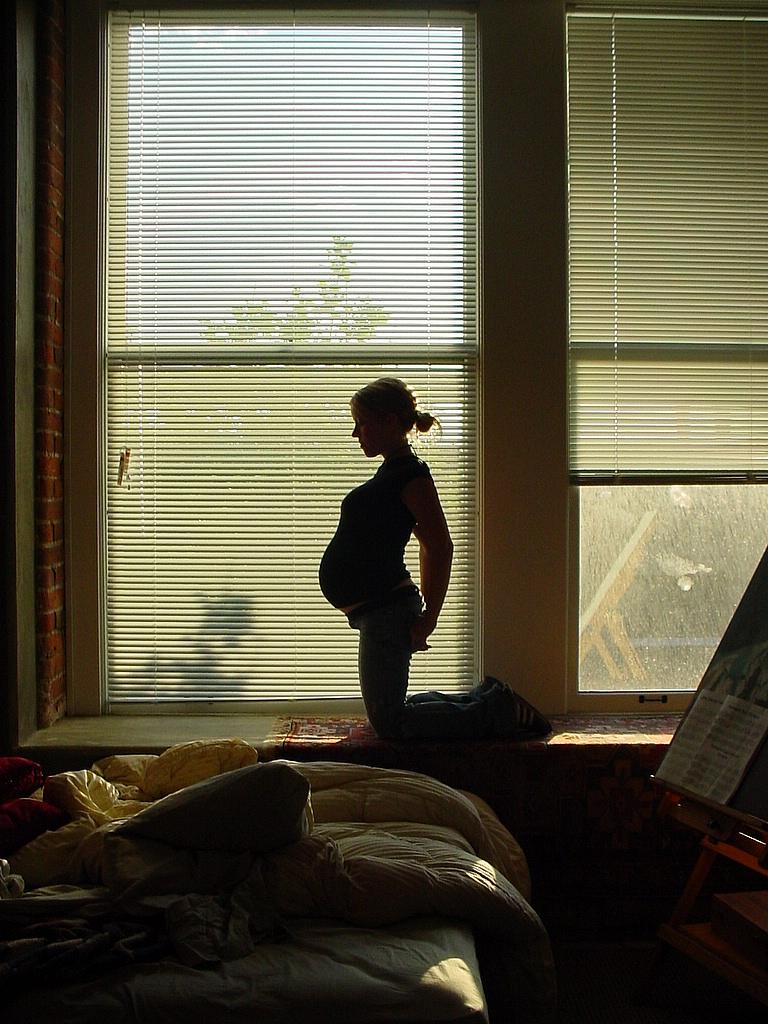An offhand remark about repeat c-sections reveals a harmful health reality

Mahalie Stackpole / Creative Commons license
In the winter of 2021, a source for a story about midwifery care made a matter-of-fact comment that startled me.
Rosanna Davis, president of the California Association of Licensed Midwives, said very calmly over the phone, “All over the state, women are forced into repeat cesareans whether they need them or not.”
Her words rattled around in the back of my mind for quite some time. When I started reporting on her claim a year later, I learned very quickly that access to vaginal birth after cesarean — or VBAC — is incredibly limited in the state. The data show that nearly nine times out of 10, people who have had a prior C-section go right back into surgery.
While the issue affects thousands upon thousands of people giving birth in our state, it has flown under the radar.
As Dr. Annette Fineberg, an obstetrician-gynecologist, put it, coerced or forced surgery “violates the rights of the woman.”
There is also a physical risk imposed on birthing people. While vaginal birth after C-section increases the risk of uterine rupture (to less than 1%), repeat C-sections increase the chance of a host of devastating birth outcomes, including hemorrhage, future infertility, hysterectomy and maternal death. The risks of both repeat cesareans and VBACs are serious, yet many Californians are denied a real choice and presented with surgery as the only option.
This problem touches every corner of our state, so the audience is everywhere. A lot of my reporting focused on Modesto, partly by happenstance — I found good sources there relatively early in the reporting process. Usually, I would focus on the “worst” example — for this story, that would be a county with the lowest VBAC rate, or one of the lowest. But my editor and I decided that it would work better to focus on Stanislaus County, which has a more typical VBAC rate, so it seemed to represent the average (and the average is really bad!). Stanislaus County is also relatively close to Sacramento County and the home of our sister paper, The Modesto Bee.
I was fortunate to have an established network of licensed midwife and nurse-midwife sources, who got me started with the lay of the land. And while I do not believe that I learned anything groundbreaking through this reporting process, it reinforced many valuable lessons.
If you can’t stop thinking about something a source said, report it out!
I think this happens to me often during interviews: Someone makes an offhand remark about their field that is well-known among their peers but seems bananas to me as an outsider. It’s good to make an actual note of these comments and save it somewhere to follow up when you have time.
Do good work and people will trust you.
It’s so useful to have a calling card clip that you can send to sources and say, “This is some of my previous reporting, for your reference.” I think I gained a lot of goodwill because I had maternal health clips that sources thought were thorough, accurate and fair.
No one is above a fact check.
There hasn’t been a ton of VBAC coverage, but many of the published stories I read put too much weight on the opinions of one or two OB-GYNs who emphasized the danger associated with VBAC — and ignored or downplayed the rigorous data on VBAC safety that is very much out in the world. It can feel as though we don’t always have time to fact-check an expert, but (apologies to the experts) they’re wrong sometimes! And we don’t have to “both-sides” everything if one of the sides is plainly wrong. When I was initially having conversations with my editors about this story, we talked about how we would need to represent the perspective of a doctor who won’t do VBACs. Ultimately, we didn’t feel we needed to include that voice, because, especially in a hospital with anesthesia, that voice just isn’t backed by science.
You can quote male experts in stories about maternal health, but you really do not need to quote male experts in stories about maternal health. You may not need to quote men at all. There are plenty of female experts out there, and they have email addresses!
You can’t delete your Facebook because, I’m sorry to tell you, it’s still a great place to find sources.
Going in, I knew it would be easy to get experts, health care providers and birth workers to talk to me about this. But I was extremely nervous that I wouldn’t be able to find moms or birthing parents who would share their experiences. The easiest thing is when health care providers (in this case, midwives) connect you with their clients, but that doesn’t always work out. For this story, it did work out — two midwives put me in touch with a couple of their clients, and I used three of those clients’ stories in the final piece. But, as much as I hate to admit it, Facebook is where I found some important sources for this article, including the mother whose wrenching story drove home the real stakes of this issue. So, dust off your Facebook login and join local mom groups in the area you’re reporting on.
Lean on your mentors.
I’ve always been hesitant to ask people outside my current news organization to read a piece over for me. But as a Center for Health Journalism 2023 California Health Equity Fellow, I asked my mentor, Victoria Colliver, to give this one a look, and she gave me thoughtful notes about the writing that changed the piece for the better. That kind of feedback can be invaluable.

